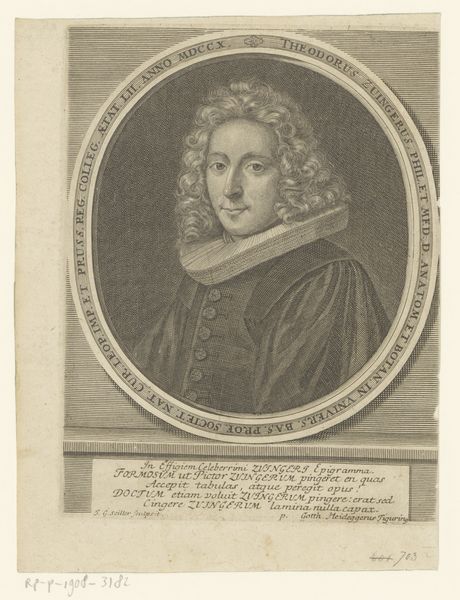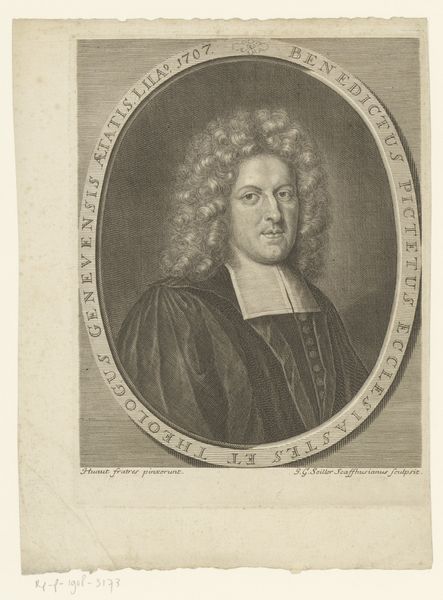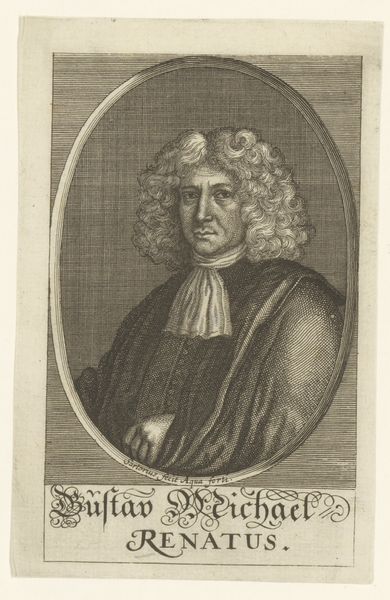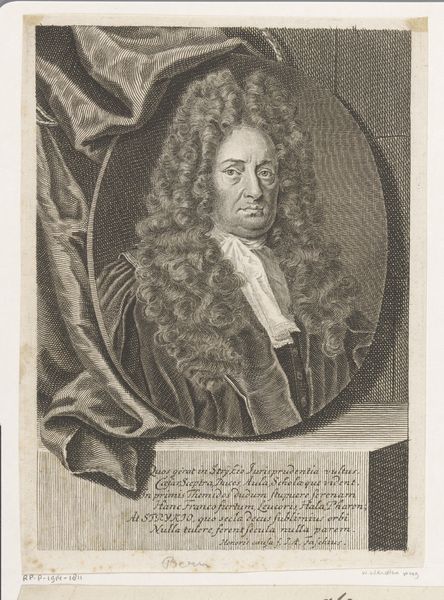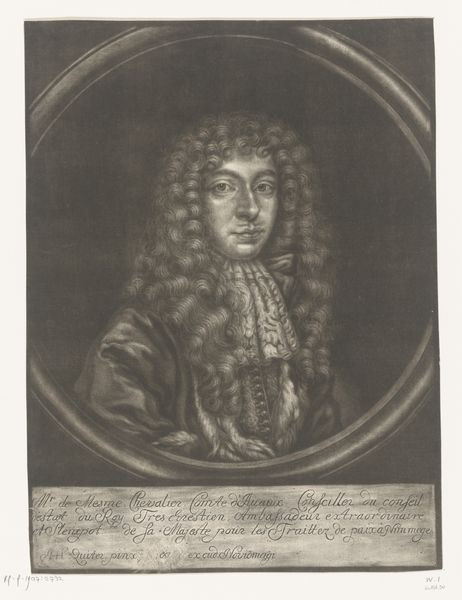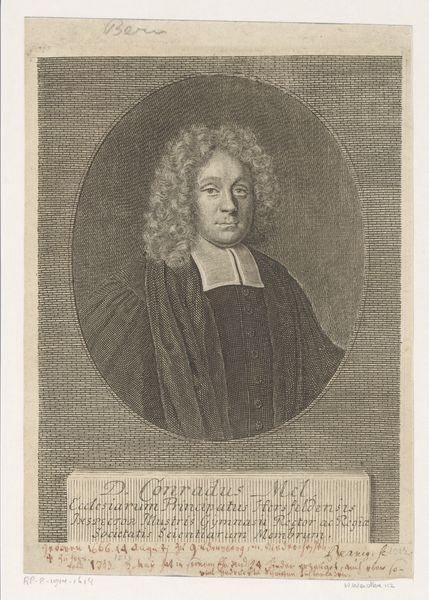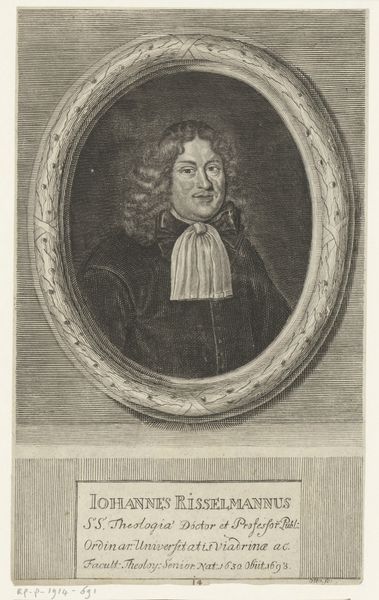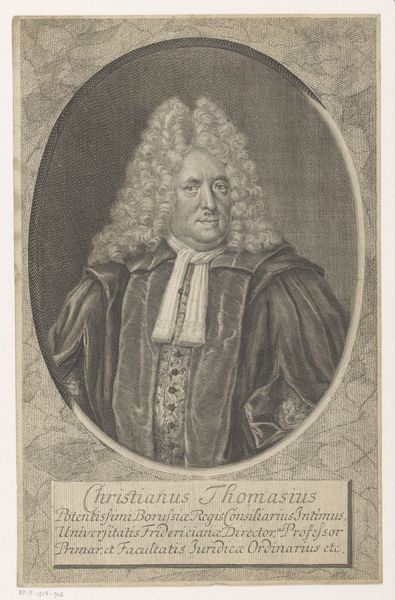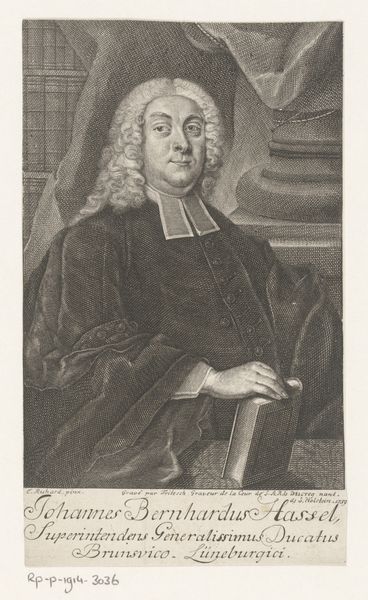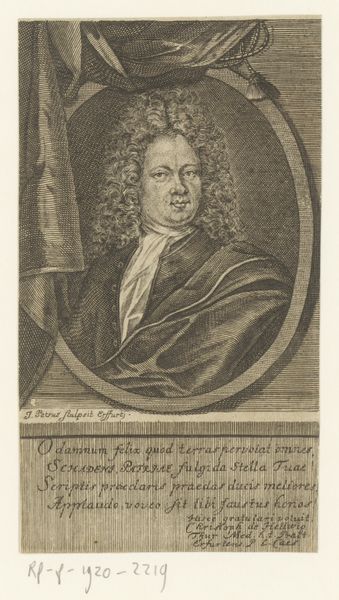
engraving
#
portrait
#
baroque
#
dutch-golden-age
#
engraving
Dimensions: height 146 mm, width 95 mm
Copyright: Rijks Museum: Open Domain
Philibert Bouttats made this print of Pieter Rabus, using a technique called engraving. The image starts as a bare metal plate, and the artist etches lines into the surface using a sharp tool called a burin. Ink is then applied to the plate, lodging in those recesses, and the excess is wiped away. Finally, the plate is pressed onto paper, transferring the image. This process demands precision and control, but also allows for very fine detail, like the delicate lines that create the impression of Rabus’s wig. Beyond its aesthetic qualities, the print embodies the social and economic forces of its time. As a relatively inexpensive medium, printmaking facilitated the spread of knowledge and ideas, contributing to the growth of a public sphere. Portraits like these could circulate widely, solidifying the reputation of figures like Rabus, who was a prominent writer and publisher. So, next time you look at a print, consider the labor and ingenuity involved in its production, and how it reflects the world in which it was made.
Comments
No comments
Be the first to comment and join the conversation on the ultimate creative platform.

